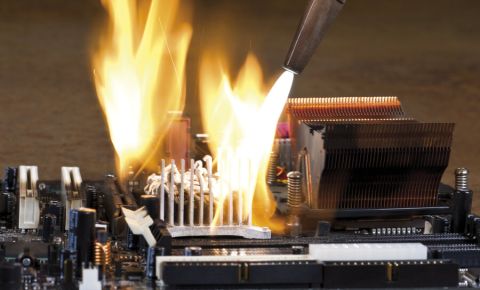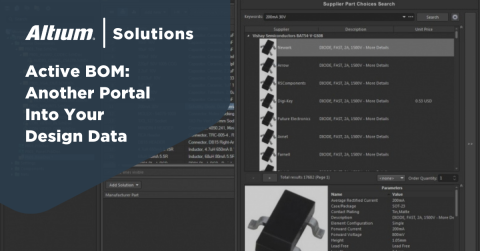Why Designing a High Voltage PCB for Rapid Prototyping Is More Effective Than Rushing to Form Factor
Remember that fable we all were told as kids about the tortoise and the hare? The moral of the story was that slow and steady wins the race. In engineering, this is especially true when it comes to creating a consumer product quickly. However, this practice is rarely the approach we take. I personally experienced this when I rushed the design of a dimmer for the IOT market. In fact, I was making two dimmers. The first dimmer was simpler and used a Triode for Alternating Current (TRIAC), and the second dimmer was more complicated and used a pair of high voltage Metal-Oxide Semiconductor Field-Effect Transistors (MOSFETs). Because the TRIAC dimmer was simpler, I started with it and immediately went to a form factor design. Conversely, for the MOSFET dimmer I didn’t rush to form factor. Instead I left room for extra debugging because it was a much more difficult type of dimmer. This extra space allowed me to easily probe the underlying circuit. I call this technique “rapid prototyping” because it never produces an end product, but allows a designer to reach product milestones faster.
Contrasting the development strategies of these dimmers is amazing. Both products released at nearly identical times despite the TRIAC dimmer being a simpler circuit and started several months prior to the MOSFET dimmer. The slowdown occurred because going to form factor too early created many unanticipated issues later in the design process. As many of you know, a design is never actually done until its specified requirements are met. The key to knowing a design is finished is being able to measure its performance to verify these requirements, and that is where we will start first.
Typical dimmer TRIAC and MOSFET components
Making Critical Performance Measurements
It was notoriously difficult to measure the performance metrics of the dimmer circuits, e.g., rise time, start up voltage, phase delay, etc. One major problem was the grounding method for the dimmer. The TRIAC used a full-wave bridge rectifier for the input to the AC/DC power supply, which meant that the system ground was not related to earth ground. As a result, we had to take extra care to not destroy test equipment because of this. The form factor TRIAC PCB had very little room for probing or simulating an active circuit. Therefore, it could not be rigorously tested and instead relied on functional testing to validate its performance metrics. The MOSFET dimmer had many places to attach wires could and had many probe points so it could easily take advantage of an isolation transformer to remove the grounding issue. Being able to test the dimmer was great, but it also meant that some aspects of the design needed to change once a failure was discovered. To test out ideas for solving these issues, the MOSFET PCB could have components directly soldered to it because there was plenty of space and pads to do so. On the other hand, the TRIAC dimmer required a complete respin every time there was a change required because the spacing and size constraints were so tight.
Expanded PCB with debug headers, great for rapid prototyping
Making Changes to the Layout and Design
Ouch. Did you feel that? That’s the sting of having to deal with field failures or other issues reported from testing. It could also be from the CEO wanting a new hot-rod feature that wasn’t previously scoped. The bottom line is that any true product design will go through several cycles for a whole multitude of reasons. These changes will be very costly if the layout is already form factored. A huge mistake I made was assuming a TRIAC didn’t have a polarity. The particular dimmer I was building could switch the LINE and LOAD terminals and still function correctly as a dimmer. This did not work at first because the TRIAC would not avalanche for one of these two directions. The only fix for this was adding another component to the PCB, which was extremely difficult in the form factor design. A similar issue happened for the MOSFET design. The special voltage rail used to turn on the MOSFETs just wasn't good enough and I needed to change the BUCK design that was part of the AC/DC circuit. In the non-form factor board all that took was a very quick and easy layout change to verify because space was not an issue at this point in the design cycle. However, you will eventually have to go to form factor.
Brainstorming PCB layout changes
You Have to Go Form Factor Eventually
It’s pretty clear that rushing to form factor can really slow a design down. Even so, a true design must go to form factor eventually. Even with state of the art PCB design software and inventory management systems, creating form factor designs takes a lot of work. That’s because it’s more than just planning a layout, it is also second sources for components and a real inventory management system as production begins to ramp up. Any change to the layout that results in a Bill of Materials (BOM) change will have other ripple effects. The reality is that we will all rush to form factor at some point.
If I hadn’t properly managed my TRIAC dimmer’s BOM throughout each revision then it would have taken even longer to go into production. Remember, the components you initially sourced may no longer be available by the time you’re ready to send off your designs to manufacturing, or the alternatives might not suit your budget. It’s common to forget about component availability when you’re focused on fixing design errors. While we have yet to automate PCB design, there is software that can track your components’ availability and compare real-time pricing.
Regardless of whether I’ve convinced you to follow my advice to try “rapid prototyping” or if you still prefer to go straight to form factor, there are great bill of materials functions inside Altium software to help you out. I recommend using this PCB design software add-on that can track component availability, obsolescence and compare pricing. Let the software handle your BOM so that you can focus on your design.
Have a question about managing your bill of materials? Contact an expert today.










